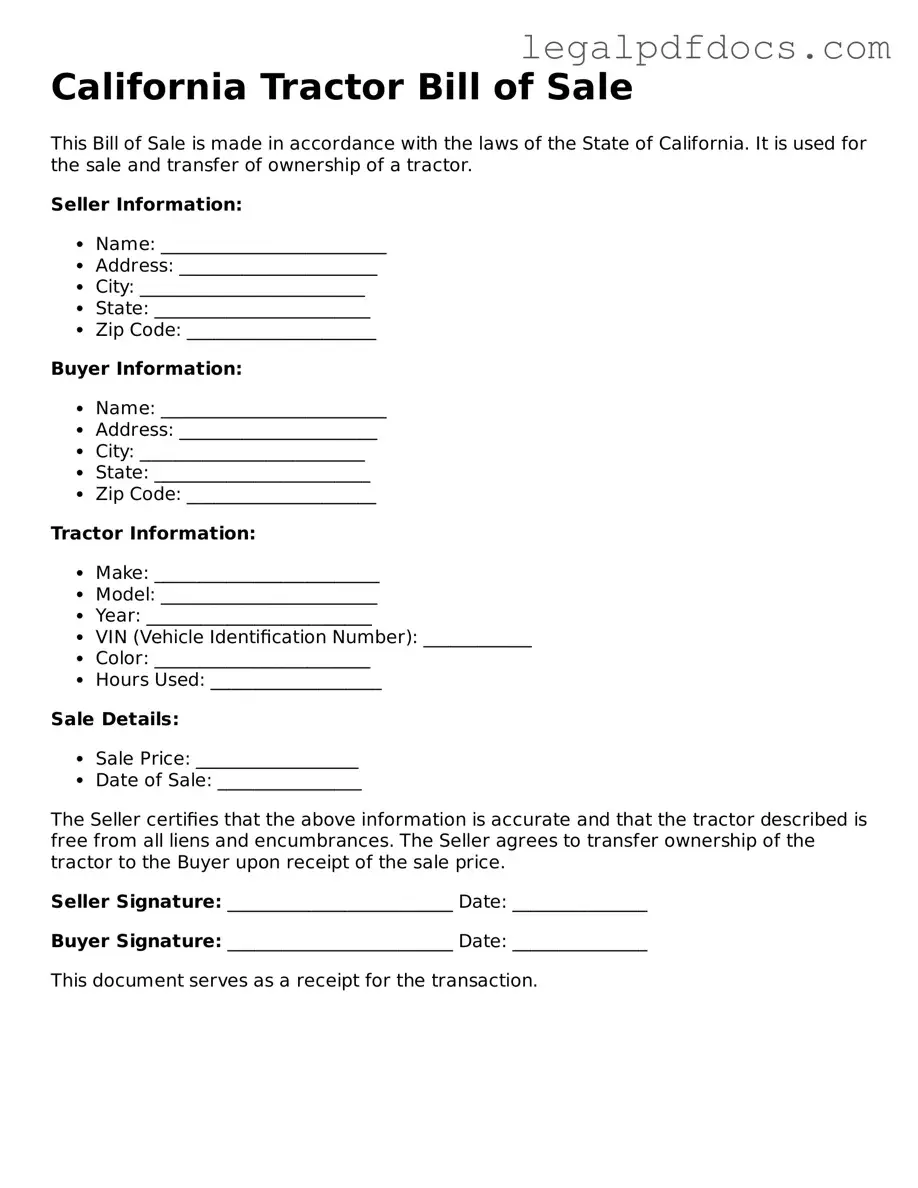When it comes to buying or selling a tractor in California, having the right documentation is essential to ensure a smooth transaction. The California Tractor Bill of Sale form serves as a crucial legal document that records the details of the sale, including the names and addresses of both the buyer and seller, the tractor's identification number, and its make and model. This form not only confirms the transfer of ownership but also provides important information about the sale price and date of transaction. By utilizing this form, both parties protect their interests, as it serves as proof of the sale and can be referenced in future disputes or for registration purposes. Additionally, the form may include sections for any warranties or representations made by the seller, further clarifying the terms of the sale. Understanding the significance of this document is vital for anyone involved in the agricultural industry or simply looking to purchase or sell a tractor in the Golden State.
